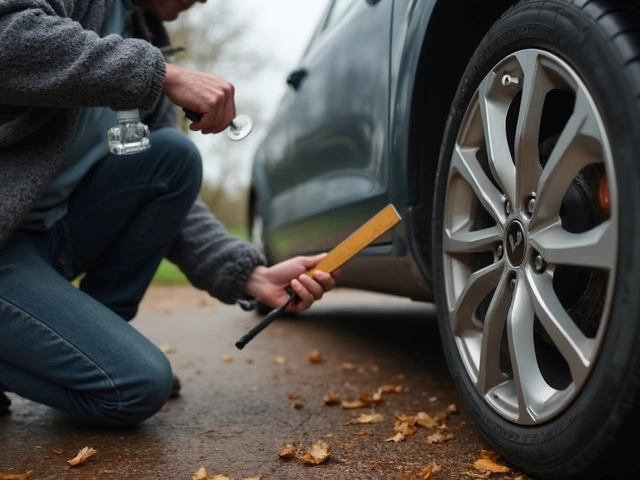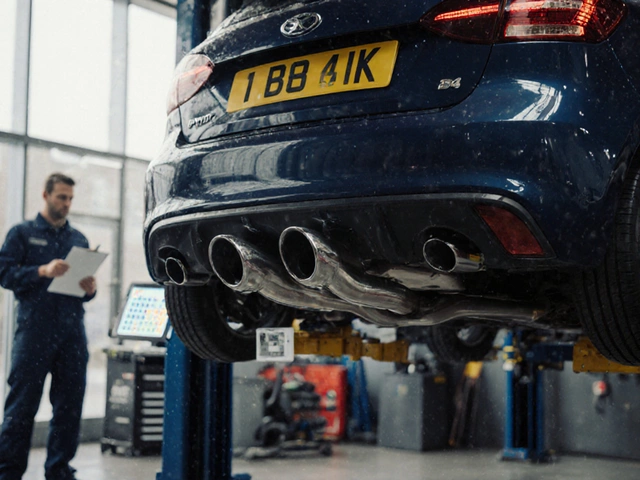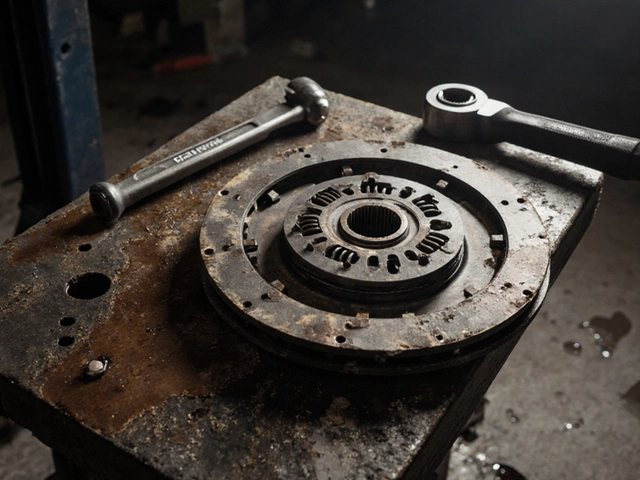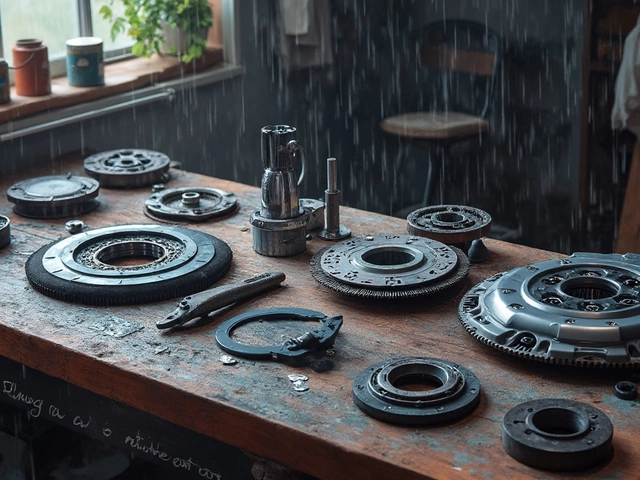Windex is sitting under your kitchen sink, and your washer fluid is running low—it's tempting to just fill the reservoir and go. Lots of folks have tried it, especially when a trip to the store feels like a hassle. But is grabbing that bottle of Windex actually a smart shortcut for your windshield?
At a glance, these blue liquids look pretty similar. Both can clean glass and leave things streak-free. Windex can cut through bug splatter and grime on your windows indoors, so why not on your car, right? But before you start pouring, there are a few things you’ve got to know. Not all cleaning fluids are built for the same job, and taking risks here could end up damaging more than just dirt on your glass.
- Why People Consider Windex
- The Differences Between Windex and Windshield Washer Fluid
- Potential Risks of Using Windex in Cars
- Real-World Examples and What Mechanics Say
- Cost and Convenience Compared
- Safer Alternatives and Pro Tips
Why People Consider Windex
It’s honestly not that weird to think about using Windex as a windshield wiper fluid. First off, pretty much everyone has a bottle of it somewhere at home. You run out of washer fluid, and Windex is just sitting in the cabinet—not to mention, it's cheaper than the car-specific stuff, especially if you buy it in giant refill jugs.
Windex is famous for tackling fingerprints, smudges, and that stubborn, streaky stuff on your household windows. Folks figure if it works for the living room window, it should keep the windshield just as clear. There’s also the trust factor—brands like Windex are super well known. People assume that if it’s safe for home glass, it has to be fine on car glass too, right?
Sometimes, people even notice that Windex cuts through bug splats and bird droppings on glass a lot faster than plain water. When you're in a pinch and nothing else is available, Windex feels like a pretty useful backup. Especially in summer, when gunk builds up fast, nobody wants to drive around with grime blocking their view.
Here’s the thing: the idea gets even more tempting because Windex smells clean, isn’t oily like some other cleaners, and doesn’t usually leave smears. Plus, there aren't scary warnings on the label about ruining glass. But not many people actually look up whether household glass cleaner works the same way as the stuff made for your car’s system.
The Differences Between Windex and Windshield Washer Fluid
If you pop open both bottles, you’ll notice some big differences beyond just the label. First up, Windex is made for indoor glass—think mirrors, windows, and maybe your oven door. It's not designed for the swings in temperature or the pounding your car takes out on the road.
Let’s break down what you’re actually putting in your car versus what it really needs. Windshield washer fluid isn’t just about cleaning—it's built to withstand freezing, bug guts, and all the road grime your windshield faces on a daily drive.
| Feature | Windex | Windshield Washer Fluid |
|---|---|---|
| Intended Use | Indoor glass surfaces | Car windshields (outdoor use) |
| Ammonia Content | Contains ammonia | Usually ammonia-free |
| Freezing Point | Freezes at 32°F (0°C) | Can be as low as -20°F (-29°C) |
| Additives | Mainly cleaner, dye, fragrance | Detergent, antifreeze, water repellent, sometimes bug remover |
That’s a big deal when winter rolls around. Regular Windex will freeze solid at the first sign of frost. Real washer fluid? It just keeps flowing, even in the worst blizzards.
The ingredients also tell the story. Windex often has ammonia, which isn’t kind to tinted windows or rubber parts in your wiper system. Most washer fluids skip the ammonia and add stuff that helps break down bugs and keep your lines from clogging. Plus, washer fluid options come right out of the bottle ready to pour—no diluting, no second guessing the mix.
If you drive a lot, especially in rough weather, those tiny ingredient changes make a huge difference over time. The right pick means fewer repairs and way less hassle when you’re out on the highway and the gunk hits the glass.
Potential Risks of Using Windex in Cars
Using Windex as windshield wiper fluid isn’t just a quick fix—it can bring real problems. For starters, standard Windex was never designed for car use. The formula often has ammonia, and that stuff might seem harmless, but over time, it can damage the rubber on your wiper blades and the seals around your windshield. Once the rubber degrades, your wipers start leaving streaks, squeaking, or missing spots—that’s a headache you don’t want while driving in the rain.
Another issue is temperature. Regular Windex freezes way before most actual washer fluids do. In places where winter gets real, the liquid in your wiper system could freeze up solid. That leaves you with blocked lines or even a cracked reservoir, turning a cheap shortcut into a bill for replacement parts.
And here’s something many people don’t realize: spraying Windex on your windshield while you’re driving sends a mist over your paint and metalwork. The chemicals in household glass cleaners aren’t tested for long-term exposure to car paint. Repeated use could dull the clear coat or damage finishes on your hood and trim over time.
Last, it all comes down to safety. When you spray your windshield while driving, you trust that it’s going to clear dirt, bugs, or grime quickly so you can see what’s ahead. Windex might not cut through certain oily road grime, or might leave shiny streaks—either way, your vision gets worse, not better.
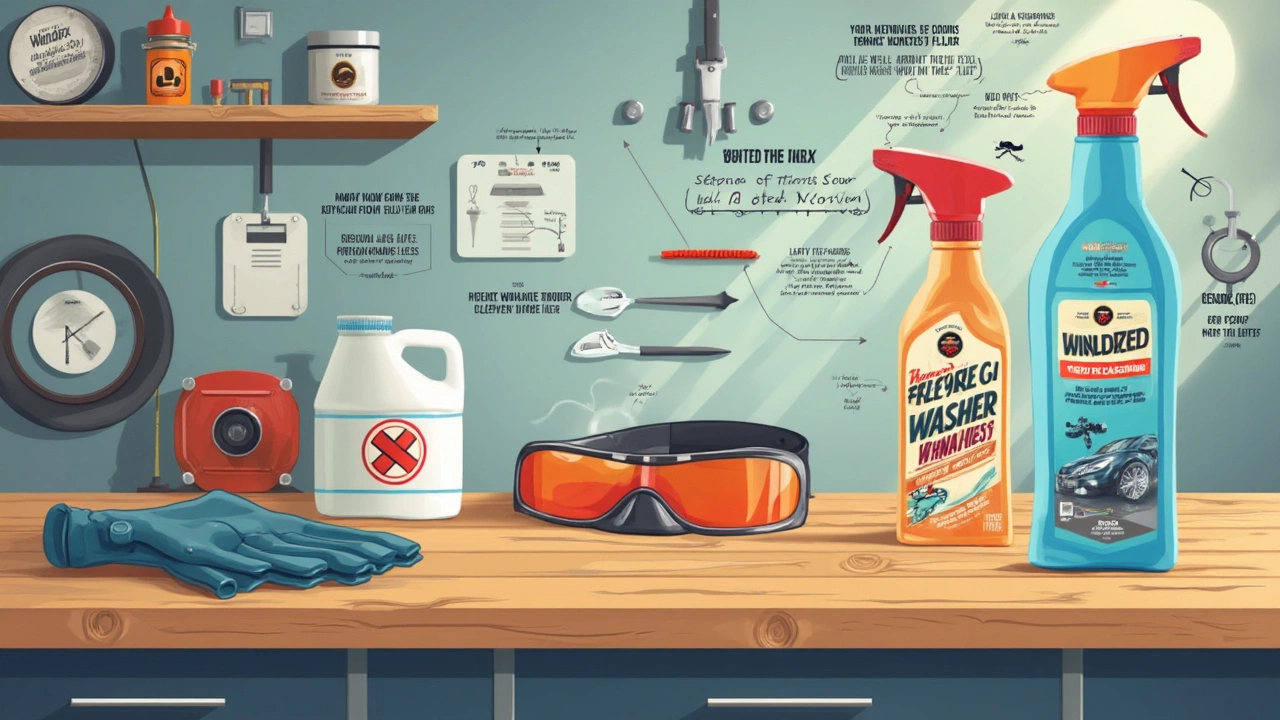
Real-World Examples and What Mechanics Say
Talk to a mechanic who’s spent years around cars, and you’ll hear the same story: plenty of people have tried dumping Windex into their windshield washer reservoir, thinking it’s no big deal. Larry, a tech at a Chicago repair shop, says he sees it at least once a month. What’s the usual outcome? “It won’t destroy things instantly, but over time it can mess up your rubber seals and pump,” he explains.
One common problem is that Windex’s ammonia content makes it great for household glass but tough on a car’s washer system. Ammonia and other harsh chemicals may cause the little rubber and plastic parts inside your washer system to wear down faster or even crack. On top of that, a report by Consumer Reports in 2022 pointed out that Windex can freeze at temperatures just below 32°F (0°C), while proper washer fluid usually keeps flowing at well below that. A frozen line in January? Not fun.
Plenty of people on car forums swap stories about gunky streaks on windshields and washer pumps clogging up after using Windex as a substitute. It might work out fine for a week or two, but if you want your windshield wiper fluid system to keep working smoothly, most pros agree it’s just not worth the risk.
- Technicians at Big O Tires and Firestone recommend using only washer fluids specifically made for vehicles. They say customers coming in with sluggish or broken pumps often admit to using household cleaners, including Windex.
- AAA’s car care guides warn against mixing home cleaning products into your windshield system. Their tests found that commercial washer fluid didn’t break down rubber parts, but household cleaners sometimes did.
| Fluid Type | Safe for Car Use? | Freezing Point | Long-Term Effects |
|---|---|---|---|
| Windshield Washer Fluid | Yes | As low as -20°F (-29°C) | No damage when used as directed |
| Windex | No | 32°F (0°C) | Can damage seals and pump, may clog lines |
So, next time you’re low on fluid and eyeing the Windex, remember what the pros see behind the scenes. It’s just not worth the headache or the repair bill later on.
Cost and Convenience Compared
People often wonder if grabbing Windex instead of real windshield wiper fluid will save them time or money. At first glance, Windex seems cheaper. You can buy a bottle of generic glass cleaner for around $3, and it’s probably sitting in your house already. On the flip side, a gallon of proper windshield washer fluid usually costs about $3-5 at big box stores.
What’s the actual difference for your wallet? If you break it down by cost per use, commercial wiper fluids often come in bigger jugs, so you get more washes per dollar. Plus, some wiper fluids have built-in additives for bug removal or freezing temps, saving you from buying special winter blends.
| Product | Average Price (1 Gallon) | Primary Use |
|---|---|---|
| Generic Windex | $3 (32oz approx. = 0.25 gal) | Indoor glass cleaning |
| Windshield Wiper Fluid | $3-$5 (full gallon) | Car windshield cleaning |
Convenience is where people might think Windex wins. It’s already in the cupboard, so why not just use it? But here’s the snag—a lot of gas stations and even big grocery stores keep proper wiper fluid by the checkout. It’s easy to grab, and you don’t run any risk of damaging your washer system or warranty.
Windshield wiper fluid is actually designed to protect your car’s components. Regular Windex might corrode hoses or tank seals, and you don’t want to be stuck with a gunked-up system right when you need a clear window most. DIY attempts can save a buck, but you could pay much more fixing damage later on.
A technician at Jiffy Lube put it pretty straight:
“People try to shortcut with household cleaners, but it doesn’t take long before they come in with bad pumps or clogged lines. Washer fluid is cheap insurance.”
So, Windex seems handy on the surface, but once you add up risk, hassle, and repair costs, it really doesn’t stack up well. Stick with real washer fluid—it’s made for the job, and you barely spend more.
Safer Alternatives and Pro Tips
If you’re serious about protecting your windshield, your wiper system, and yourself, there are much better options than grabbing the Windex. The stuff they sell at auto stores as actual windshield wiper fluid isn’t just a gimmick. It’s built for your car, made to work in crazy cold or boiling hot weather, and won’t mess up your paint or rubber seals.
You can find washer fluid in a few varieties. Regular blue stuff is fine for most drivers, but there are bug-remover formulas for summer and de-icer blends that work in winter (sometimes rated down to -20°F or even lower). Some fluids even help repel rain or grime so your wipers don’t have to work as hard. If you’re not sure what to buy, check your owner’s manual or just ask at the shop. They see local conditions and know what’s popular in your area.
Want to save a few bucks and avoid harsh chemicals? There are do-it-yourself mixes, but you shouldn’t just dump household cleaners into your tank. Here’s a quick, safe DIY recipe that won’t wreck your car:
- 1 gallon distilled water (tap water can leave gunk or clog things)
- 1 tablespoon mild dish soap (no ammonia or bleach!)
- 1/2 cup rubbing alcohol (this keeps it from freezing in winter)
Mix it all up, pour it in, and test it on a small area before filling the whole thing. If you live somewhere super cold, you’ll want to bump up the alcohol content or just stick with store-bought winter fluid.
One more thing: Always check your car’s manual first. Some fancier rides need special fluids, and you don’t want to risk screwing up a sensor or a fancy spray nozzle. Swap out your wiper blades at least once a year too. Even the world’s best cleaner can’t help you if your blades are leaving streaks or making weird noises.
Keep a backup jug of washer fluid in your trunk—because when you run out, it always seems to be pouring, snowing, or a flock of birds has just flown overhead. No need to improvise with household cleaners when the right stuff is cheap and easy to find.


